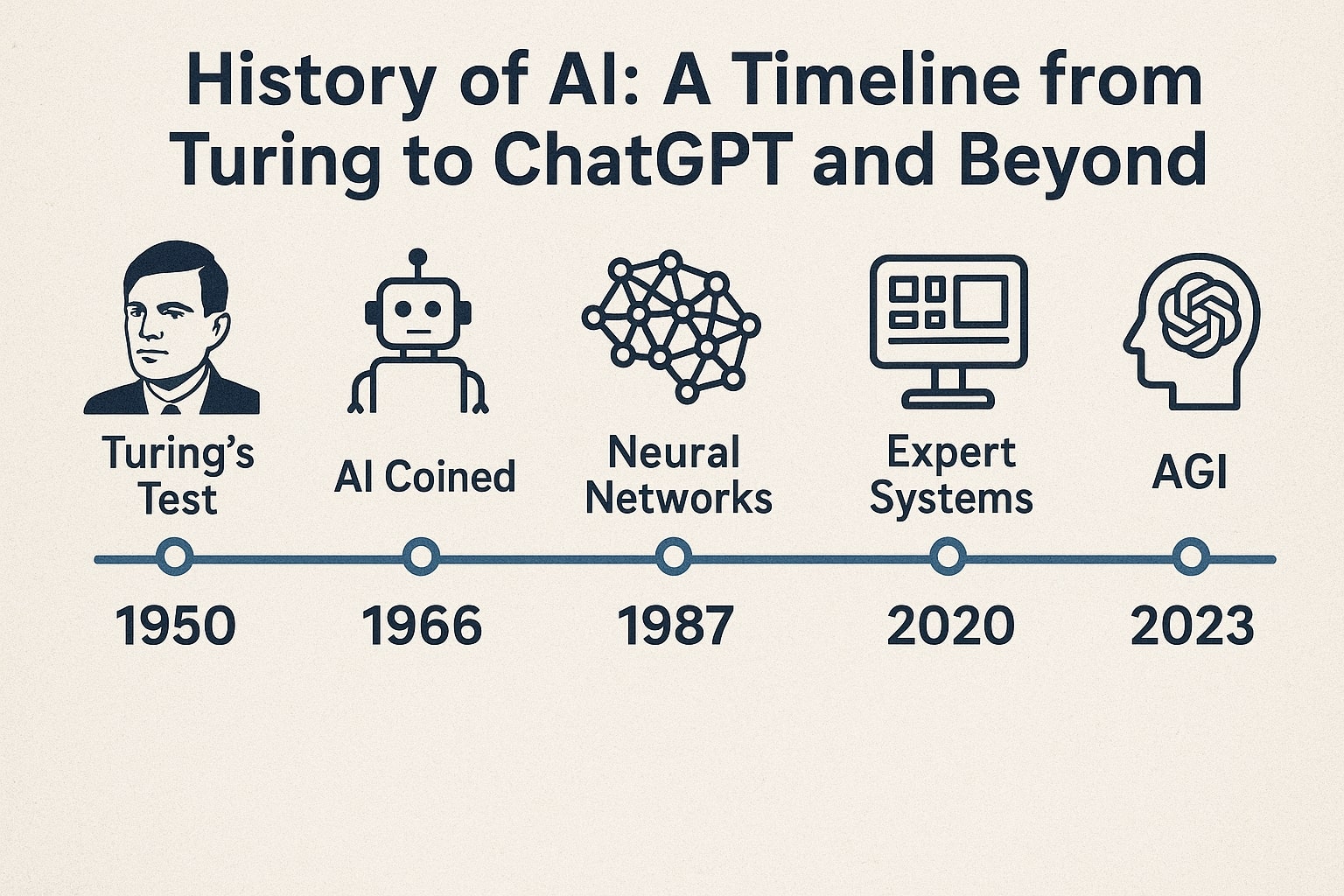The History of AI is a rollercoaster of thrilling breakthroughs, prolonged “AI winters,” and an unprecedented explosion of progress in the last decade. Understanding this timeline helps us appreciate the Artificial Intelligence we use today. Let’s journey from the theoretical beginnings to the era of ChatGPT.
The Dawn of AI: The 1950s
In the early days, AI was more theory than reality. Alan Turing asked whether machines could think, and John McCarthy officially coined the term “Artificial Intelligence.” You can explore Turing’s original ideas in the Stanford Encyclopedia of Philosophy.

Optimism and the First AI Winter: 1960s–1970s
AI optimism soared with programs solving algebra and proving logic, but when computing limits became clear, the first AI Winter struck. For more context, see IBM’s history of AI research.
The Rise of Expert Systems and the Second AI Winter: 1980s
Commercial AI took off with expert systems, but high costs and inflexibility led to another collapse. This period shaped much of today’s skepticism around AI promises.

Machine Learning Changes the Game: 1990s–2000s
The shift toward machine learning marked a turning point in the history of AI. Instead of hard-coding intelligence, researchers built algorithms that could learn from data. Learn more from MIT’s overview of machine learning.
The Deep Learning Revolution: 2010s
Thanks to big data, GPUs, and advanced algorithms, deep neural networks reshaped AI. From AlexNet to AlphaGo, this decade redefined what was possible.

The Generative AI Era: 2020s and ChatGPT
With the rise of GPT-3, ChatGPT, and multimodal AI like GPT-4, the history of AI entered a transformative era. Generative AI is now shaping industries, education, and creativity at scale.
Learn more: Explore the Top AI Terms that shaped this history, or read our comparison of Machine Learning vs. Deep Learning.
